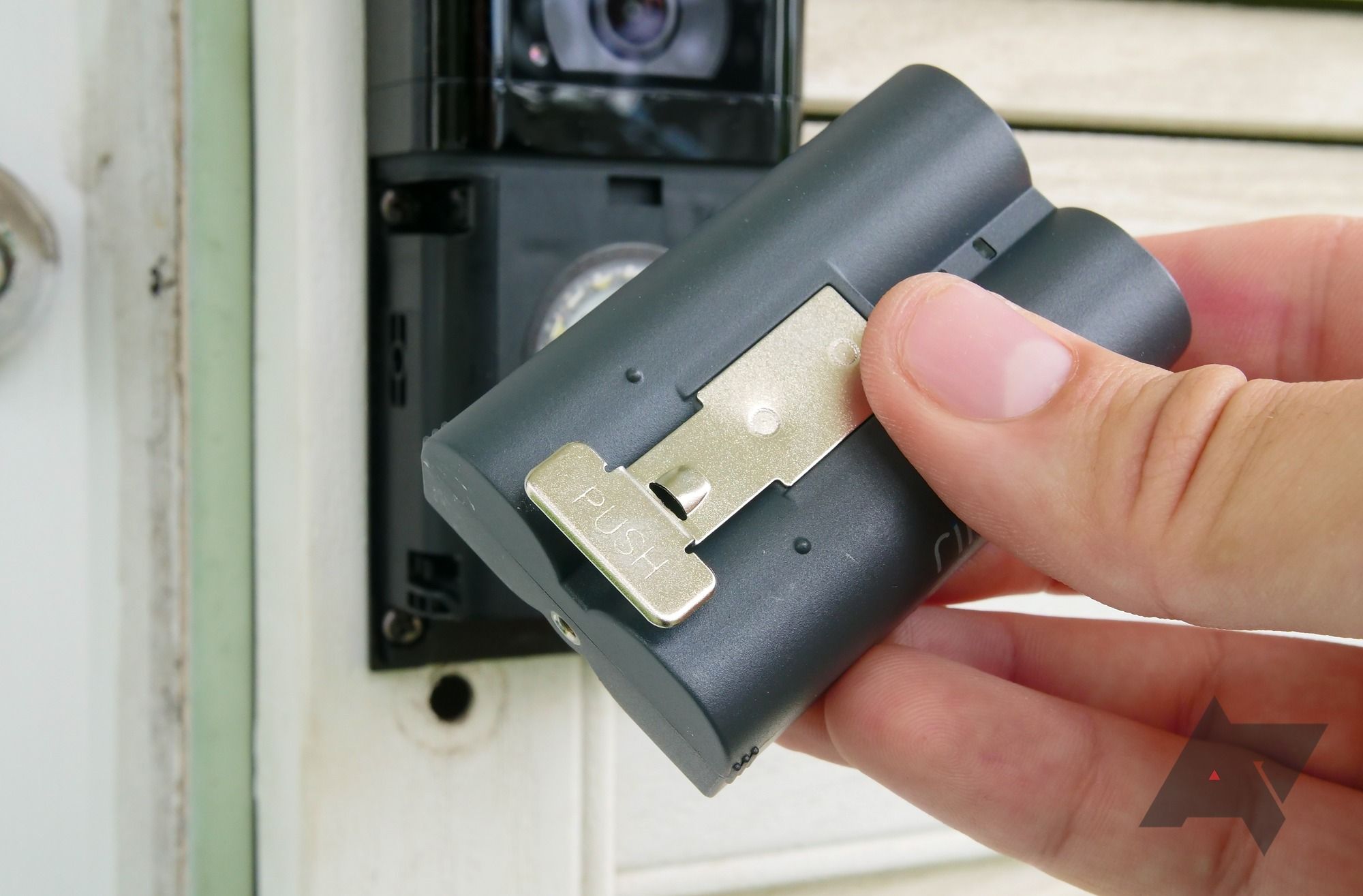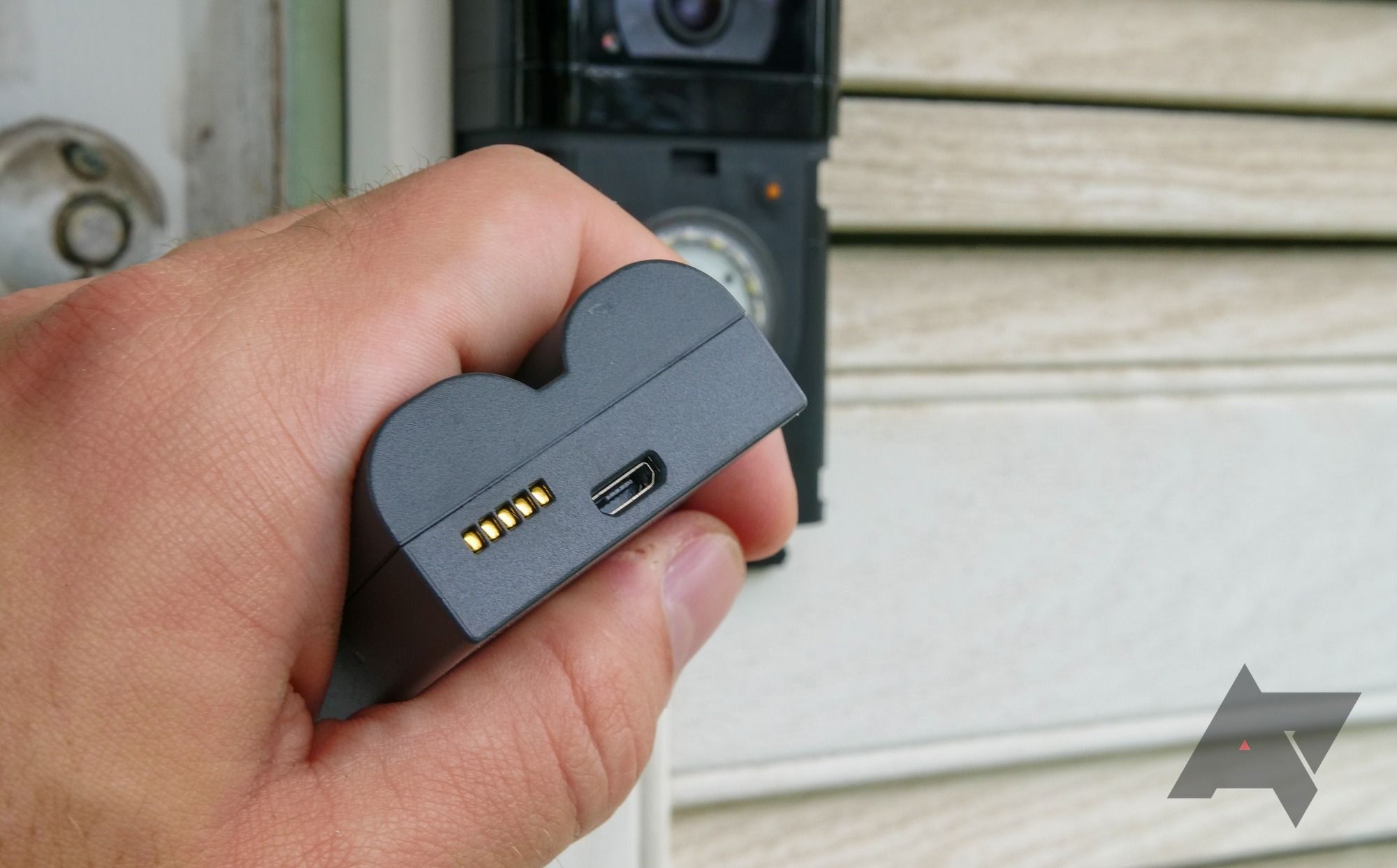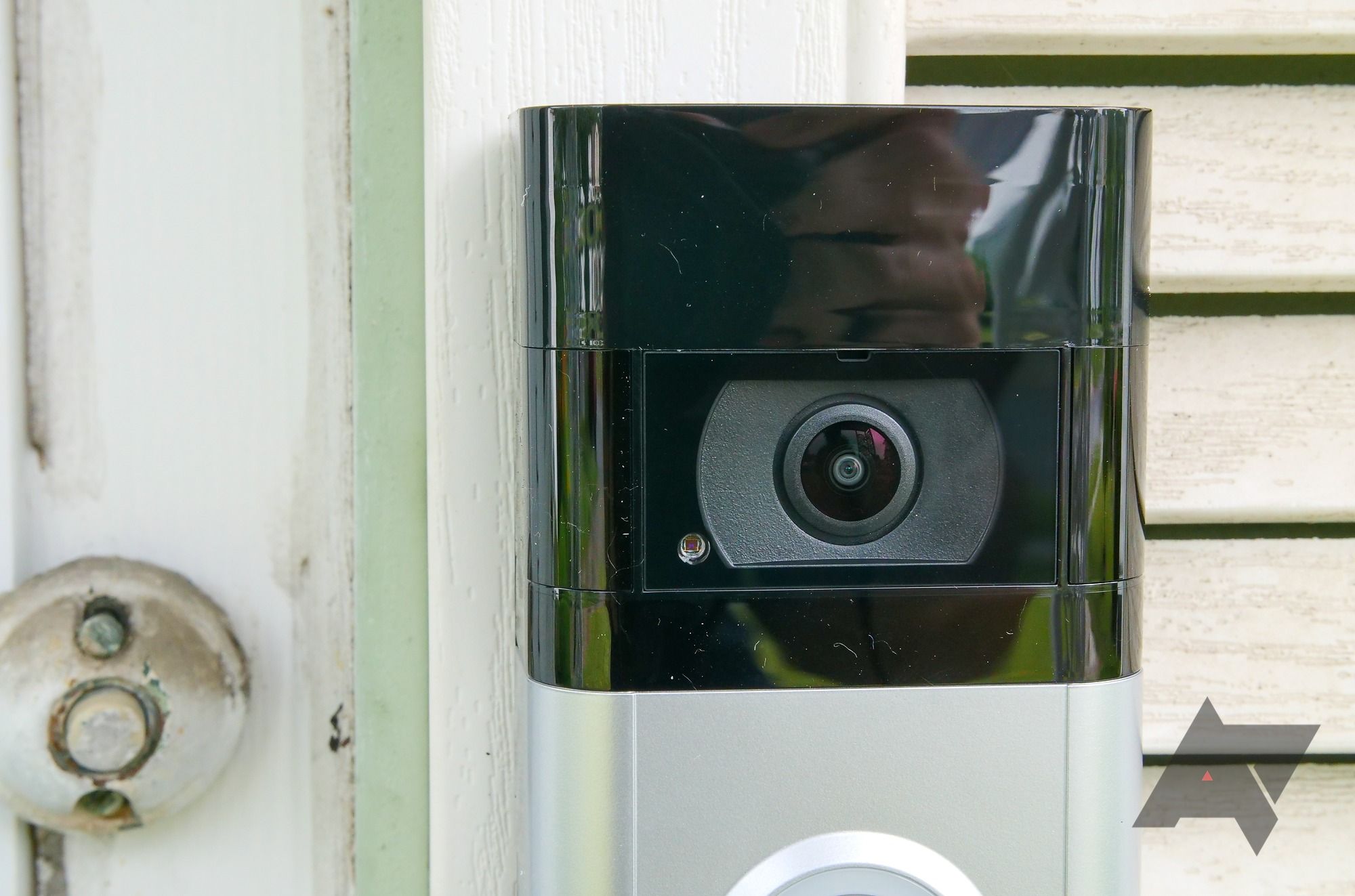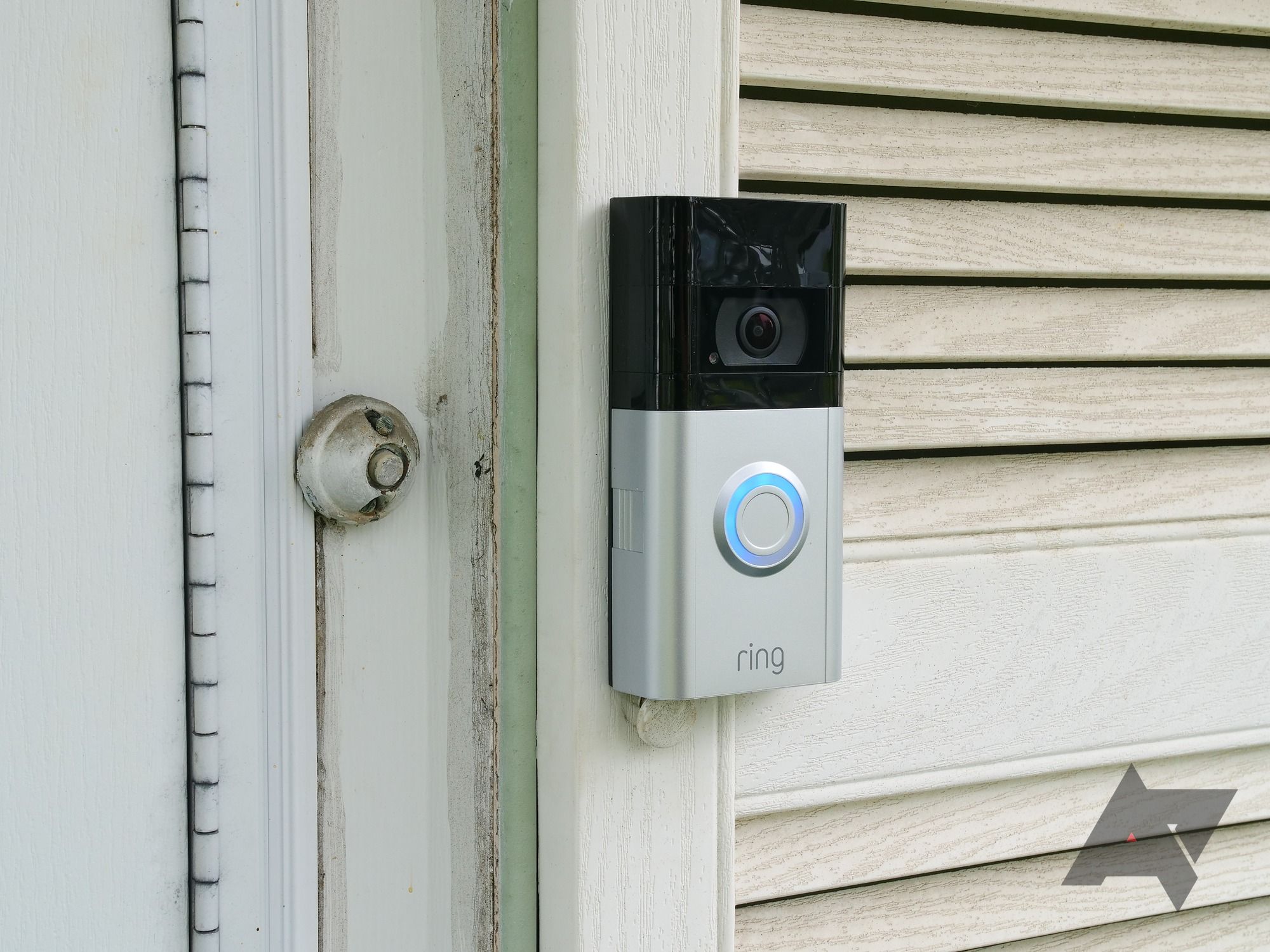-
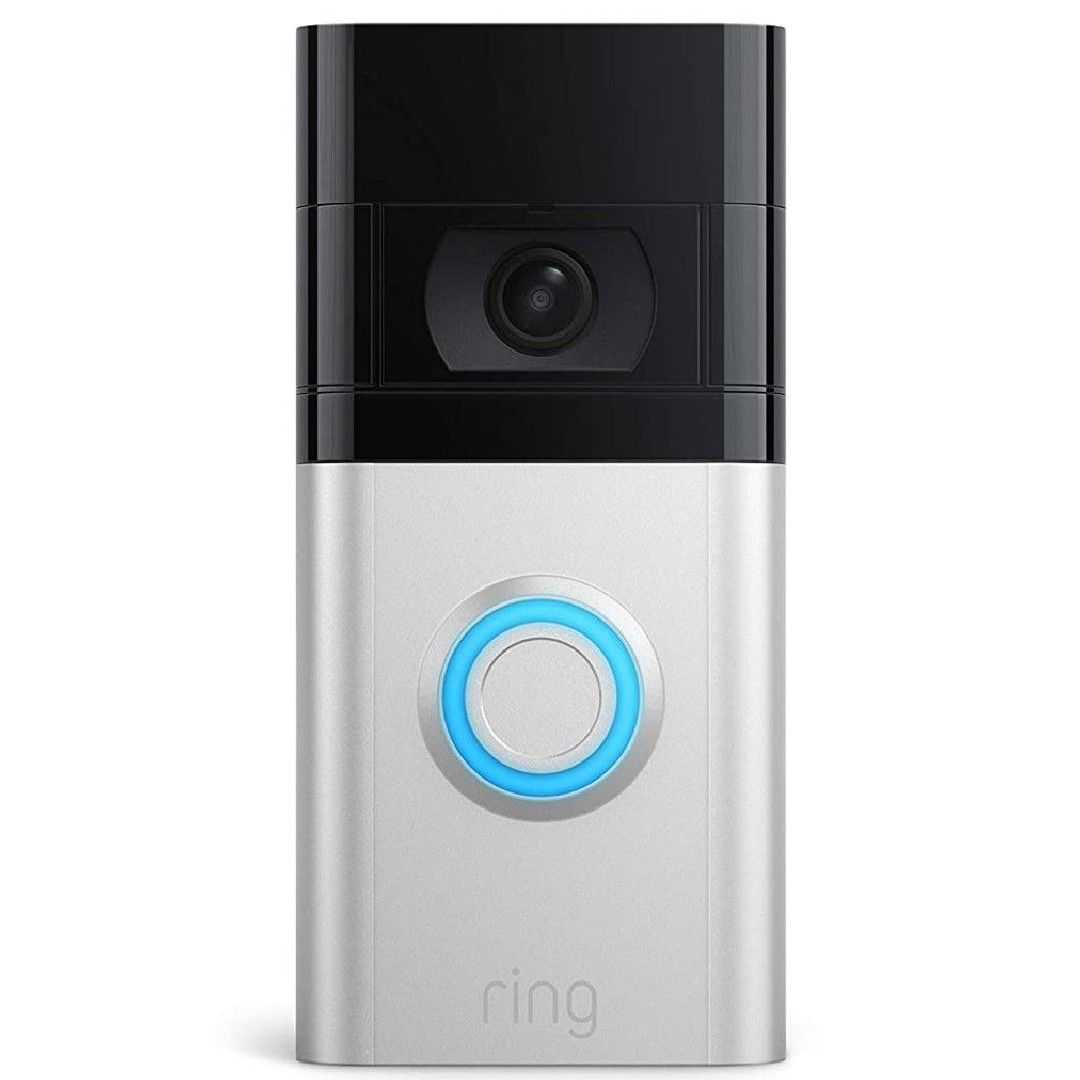
Ring Video Doorbell 4
Trusted reliable companionThe Ring Video Doorbell 4 boasts refined performance and a wide feature set, including color pre-roll recording, dual-band Wi-Fi radio, and a 1080p sensor for capturing crisp video. However, its 16:9 aspect ratio and narrow vertical field of view limit its ability to capture both the faces of visitors and packages.
Pros- Color pre-roll video
- Can be battery powered or hardwired
- Cheaper, more affordable
Cons- Inadequate aspect ratio
- Larger, more bulky design
- No Alexa greetings
-
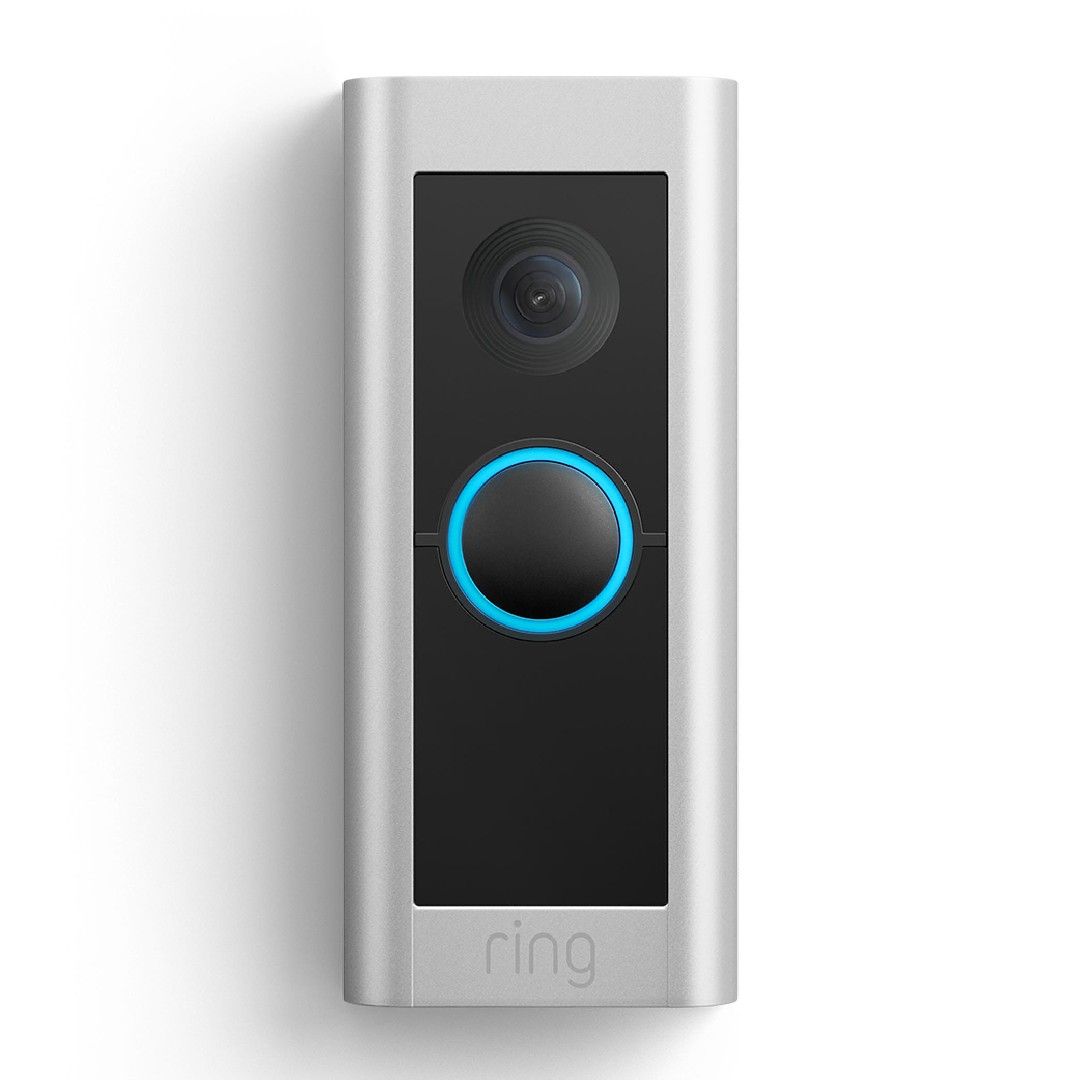
Ring Video Doorbell Pro 2
Improved and refined upgradeThe Ring Video Doorbell Pro 2 builds on an already amazing system to include a 1536p camera, enhanced audio with an array microphone, 3D motion detection, and Bird's Eye View. The upgraded camera also allows viewers to see a head-to-toe picture of what's at their door so there’s no more guessing.
Pros- Color night vision
- Slimmer design
- Better aspect ratio
Cons- Must be hardwired
- More expensive
- Subscription needed to view recorded video
A video doorbell is a simple tool in itself, but when paired with robust software, it can prove critical for your home's safety. Amazon-owned Ring has nailed that combination, which is precisely why the Ring Video Doorbell 4 and the Video Doorbell Pro 2 are so well-received in their class. The two smart doorbells share the same DNA and offer feature parity on many fronts, coming from the same brand. But their fundamental approach is quite different, which could make or break the deal for you.
Price, availability, and specs
Sitting steadily at $116, the Ring Video Doorbell 4 is affordable and attainable. There is a noticeable price gap between the Video Doorbell 4 and Ring Doorbell Pro 2, which is reasonable considering the former is the latter's predecessor.
The Pro 2 regularly costs around $250, but the more optimized camera, higher resolution, and added features make the jump worth it for many users. However, it has seen its lowest price at around $150 during peak sale time. So, between the two, you can't go wrong with the Pro 2.0
-
Ring Video Doorbell 4 Ring Video Doorbell Pro 2 Field of View 160° 150° Power Source Wired, Battery Wired Hub Required No No Integrations Alexa, IFTTT Alexa, IFTTT Connectivity Wi-Fi (2.4GHz or 5GHz) Wi-Fi (2.4GHz or 5GHz) App Compatibility Android, FireOS, iOS Android, FireOS, iOS Operating limits -5°F to 120°F -5°F to 120°F Resolution 1080p 1536 x 1536 Dimensions 128 x 62 x 28mm 114 x 49 x 22mm Camera Yes Yes Battery capacity N/A N/A Storage Cloud Cloud Storage capacity N/A N/A Night vision Black and white Color
Design and installation
Wired or wireless?
Battery-powered smart doorbells that require charging only once every few months are quite convenient. Their installation is simple, and you don't have to hide any wire (or hassle with running wire) across the front of your lovely home. However, without a constant power source, battery conservation becomes a priority, which means slightly limited functionality.
Only the Ring Video Doorbell 4 runs on battery power. While you have the option to hardwire it, you should know that even in wired mode, the doorbell won't allow continuous recording and will remain limited to motion triggers. Going for wired installation, in this case, will only save you from having to pull out its battery to recharge it with a micro-USB cable every once in a while.
Amazon claims a battery life of six months with default settings. But you aren't likely to stick with the settings you get out of the box. Tweaking them to increase motion sensitivity or frequent camera use can drop the backup significantly to a few weeks.
On the other hand, the Video Doorbell Pro 2 can only be installed with a wired connection. While that can be cumbersome if you don't already have the necessary wiring setup, the Pro 2's recording features are much more flexible. Furthermore, the Pro 2's wired setup means you won't have to worry about dying batteries and recharging, leaving you without a video feed for the time being. As it's always wired in, it's as easy as setting it up and forgetting about it.
Video and sound quality
What do the cameras see?
The camera makes for a primary part of a video doorbell, enabling most of its smart functionalities. The Ring Video Doorbell 4 and the Video Doorbell Pro 2 substantially differ in how they handle the footage. The former gets you 1080p recordings in a wider 16:9 aspect ratio, which isn't particularly ideal for a doorbell because you lose a significant portion of the view along the top and bottom edges. For example, when a person stands too close to the doorbell, you won't be able to see their face.
This isn't an issue with its Pro sibling, which records in the 1:1 ratio that can easily give you a head-to-toe view of a person and even allows you to monitor your doorstep for any packages. Its video feed is also much sharper, all thanks to a higher-res sensor that captures videos at 1536p. However, we also liked the video output quality of the standard Video Doorbell 4, especially how it could quickly change exposure settings to show the person's face clearly, even at night.
Speaking of which, night vision works better on the Pro model because it captures the image in color, while the standard model only supports black/white recording. And its speaker also sounds fuller and clearer. One area where the Video Doorbell 4 takes the lead is its wider viewing angle of 160 degrees (horizontal) versus 150 degrees on the Pro. We would've surely liked to see a full 180-degree view like many other video doorbells offer, but what these Ring doorbells provide should be more than enough for most users.
A major advantage of getting the Pro is its six seconds of pre-roll footage. Because it is a wired doorbell, its camera is always running (though not always recording). So, when it detects motion, it also pulls the video of the moments right before the trigger to give you a better visual context of exactly what transpired.
The Video Doorbell 4 also has a pre-roll feature, but its video quality is kept relatively low to conserve battery, which makes it hard even to discern faces until the person gets close. But you get the general idea of what happened before the detected motion, and considering most battery-powered doorbells don't offer this feature at all, even having the option is a big deal.
Software and features
Both doorbells use the same companion app, so their features and controls for motion detection and notifications are the same. Between the two, the Video Doorbell Pro 2 is slightly more equipped with things like Alexa replies and a bird's eye view.
When you're away or can't answer the door, Alexa can greet your visitors or take messages for you. That sure sounds futuristic, but talking to a robot may be off-putting for your guests. You nevertheless have the option and can use it in a pinch.
As for the bird's eye view, the Pro has a radar that improves motion tracking significantly and tells you the exact path your visitors (or a potential intruder) took while walking up to your front door. Mated to satellite imagery, the doorbell gives you an aerial view of their movement. This is perhaps the most interesting bit about the Video Doorbell Pro 2, and the feature even comes with an adequate trackable range of up to 30 feet.
It was only last year that the Video Doorbell 2 Pro got the ability to automatically track packages and notify you, while the Video Doorbell 4 still can't do that. It is a bit ironic for a product made by a company that solely relies on package deliveries.
Monthly subscription and cost
Only a handful of basic features, like real-time video, motion-detection notification, and two-way talk, are available for those on the free plan. The most advanced features on both Ring doorbells are behind a paywall. That includes cloud recording, event history, messages from your visitors, smart motion alerts (which can tell apart a car going by from a human approaching your door), and more.
Amazon hiked the subscription fee for its Ring Protect Basic plan by $1 starting July 2022 to $4 a month or $40 a year. Even though the company has tried to make up for the hike by offering more features, such as extended video storage, it is still an additional amount you'll have to cough up over and above the steep upfront cost.
The subscription fee isn't the only thing to see a price increase. Even at their launch prices, the doorbells were already pretty expensive, spending more is required to unlock their full potential. Of course, as with the launch of any newer model, previous models have become less expensive and more attainable.
After the introduction of the Pro 2, the price of the Video Doorbell 4 dropped drastically, and it looks like it will be cheaper with the release of new Ring video doorbells soon. That said, upgrading to the Pro model now seems like a no-brainer.
Should you upgrade?
Coming from the house of Amazon, both Ring doorbells integrate pretty well with your Alexa-powered smart home and can show video feeds directly on an Echo screen. But if you're invested in Google's ecosystem or are bothered by the privacy issues with Ring products, you can also take a look at Google's Nest Doorbell (battery).
Several things work in the Video Doorbell Pro 2's favor. Being a wired doorbell, it's not restricted by the limitations of a battery-powered one, and you get the extra perks of Alexa replies and a bird's eye view. What matters the most here is that the Pro's camera is better than the standard Ring doorbell on almost all fronts. Considering everything you're getting with the Video Doorbell Pro 2 and its compact, more modern look, it's well worth the switch.

Ring Video Doorbell Pro 2
Worth the substantial upgrade
The Ring Video Doorbell Pro 2 is a clear winner with an improved aspect ratio and overall video quality. The upgraded audio system, enhanced color pre-roll, and additional features make the Ring Video Doorbell Pro 2 well worth the upgrade.
But a wired setup doesn't work for everyone. For example, you may be in an apartment where it isn't possible to lay new wires, or you may want to install the doorbell someplace that doesn't have existing wiring. The Video Doorbell 4 is cut out for situations like these. By going for the non-Pro Ring doorbell, you will save some cash upfront and get the convenience of a hassle-free installation. And since there's a lot of feature parity between the two models, you won't be missing a lot.

Ring Video Doorbell 4
Tried and true old reliable
The Ring Video Doorbell 4 takes place as the runner-up, however, this does not discount the device as being anything less than amazing. The less-than-ideal aspect ratio really is the deal-breaker between these two devices, but the Ring Video Doorbell 4 still holds up to a lot of big competition.

